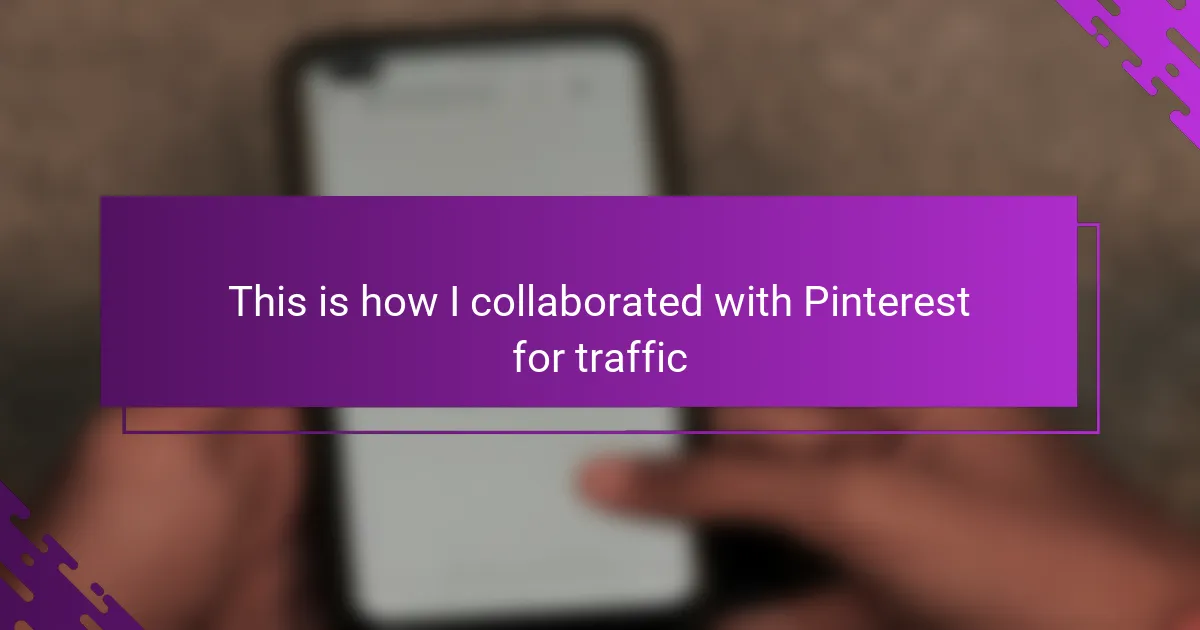Key takeaways
- Pinterest functions more as a visual search engine, promoting evergreen content that can drive traffic long-term.
- Setting clear, measurable traffic goals and aligning them with your target audience can enhance engagement and motivation.
- Creating authentic, visually appealing pins that tell a story can significantly increase user interaction and interest.
- Effective communication and regular contributions to collaborations, along with responsiveness to performance data, are essential for successful partnerships.
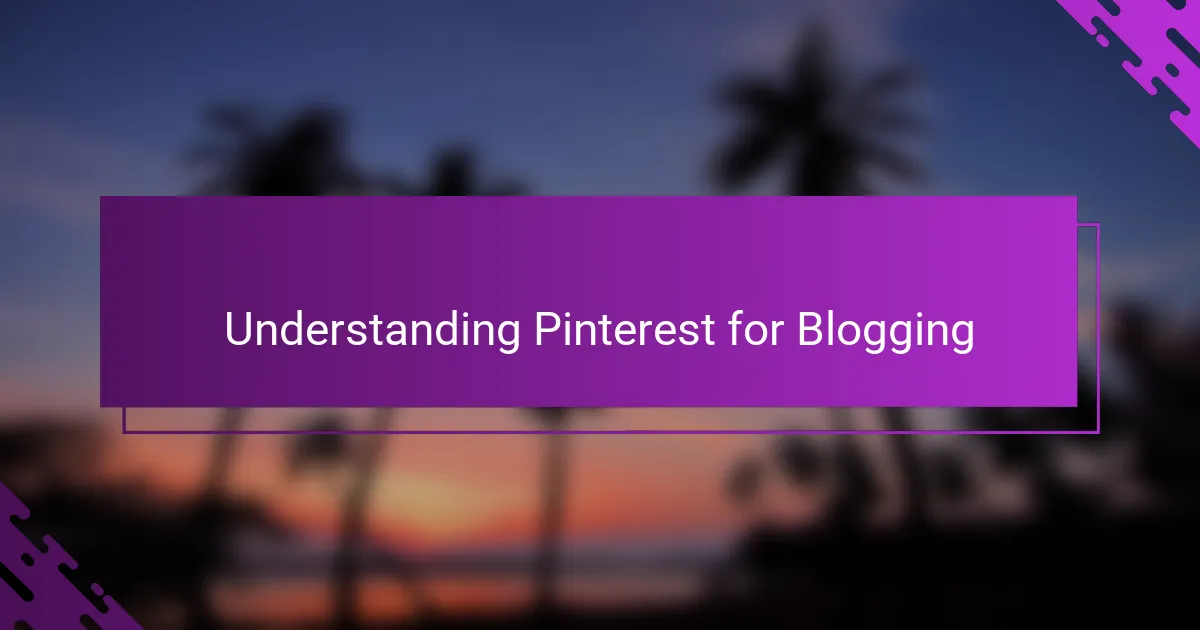
Understanding Pinterest for Blogging
When I first looked at Pinterest, I saw it as just another social platform. But then I realized it’s more like a visual search engine tailored for discovery. Have you ever thought about how people don’t just scroll—they search for inspiration?
What struck me is how Pinterest’s algorithm favors evergreen content. Unlike a tweet that disappears in hours, a well-crafted pin can drive traffic for months or even years. It made me rethink how I create and organize my blog posts, knowing they could have a much longer shelf life here.
I also noticed Pinterest rewards storytelling through images that connect emotionally. It’s not just pretty pictures; it’s about sparking curiosity and excitement. Isn’t it fascinating how a single pin can tell a story that pulls people in and guides them right to your blog?
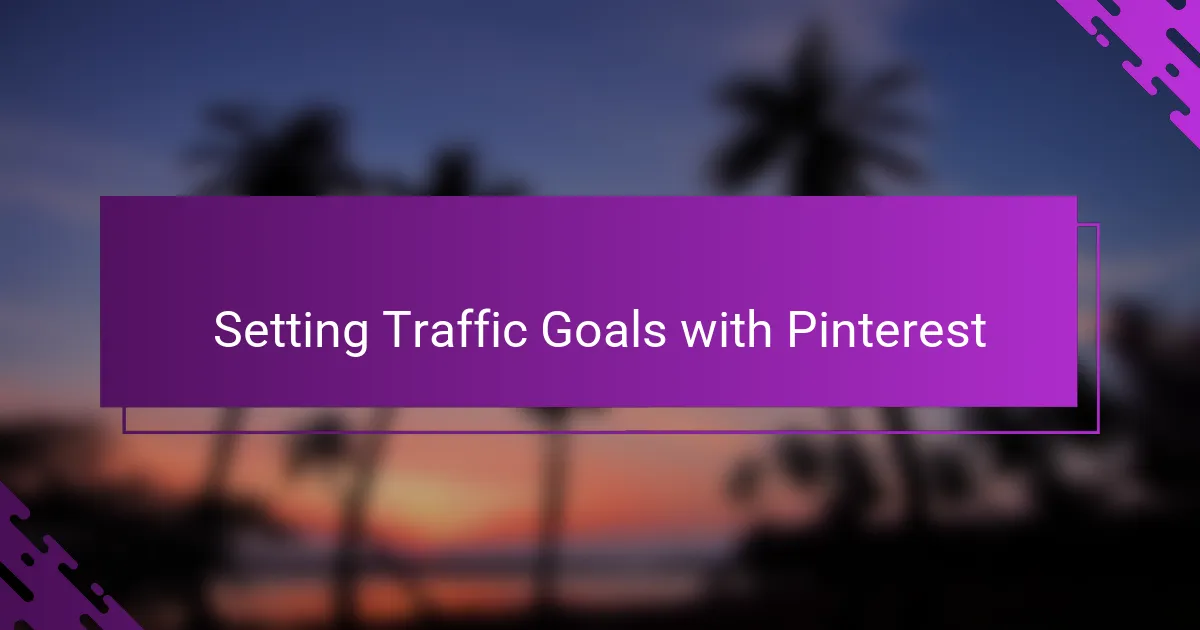
Setting Traffic Goals with Pinterest
Setting traffic goals with Pinterest felt a bit like setting sail without a compass at first. I asked myself, how much traffic is realistic? And what kind of growth should I expect when starting from zero? Pinpointing clear, measurable targets gave me a sense of direction and motivation to keep going.
I found it really helpful to break down my goals into smaller milestones—like aiming for a certain number of monthly viewers or pins saved. This made progress feel tangible instead of overwhelming. Have you ever noticed how celebrating small wins can fuel bigger successes? That’s exactly how Pinterest kept me inspired.
Most importantly, I learned to align my traffic goals with the type of audience I wanted to attract. It wasn’t just about numbers; it was about attracting the right people who would genuinely engage with my blog. Isn’t it more satisfying when your traffic feels meaningful, not just random clicks? That shift in mindset changed everything for me.
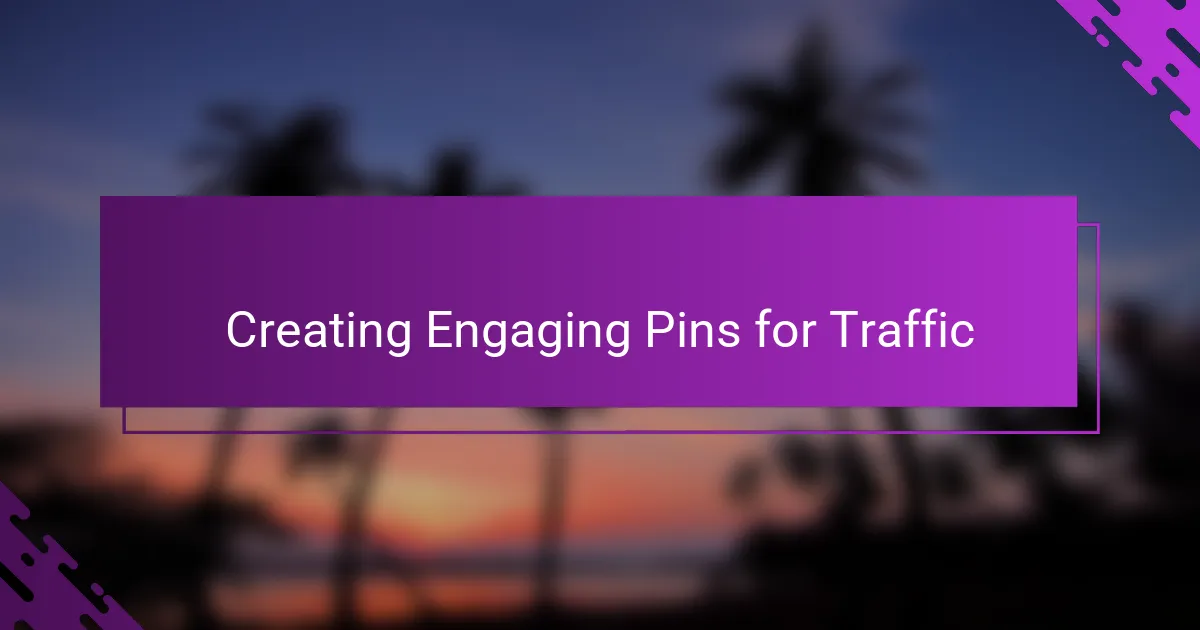
Creating Engaging Pins for Traffic
Creating pins that truly capture attention was a game-changer for me. Instead of just slapping a photo with text, I started thinking about the story behind the image—what would make someone pause and want to learn more? Have you ever caught yourself scrolling past countless pins because they felt flat or generic? That’s exactly what I wanted to avoid.
I realized that bold, clear visuals paired with concise, compelling titles were key. Sometimes, I’d experiment with different color schemes or layouts just to see what resonated more. It felt like I was crafting tiny billboards that needed to shout “click me!” without yelling. And the best part? Watching those pins get saved and shared made all that tweaking worthwhile.
But here’s something I hadn’t expected: authenticity mattered as much as aesthetics. Pins that reflected my genuine voice and style connected better with people. When I stopped chasing trends and started creating pins that felt true to my blog’s personality, the engagement and traffic followed naturally. Have you noticed how real stories often draw you in more than polished ads? That’s the magic I tapped into on Pinterest.
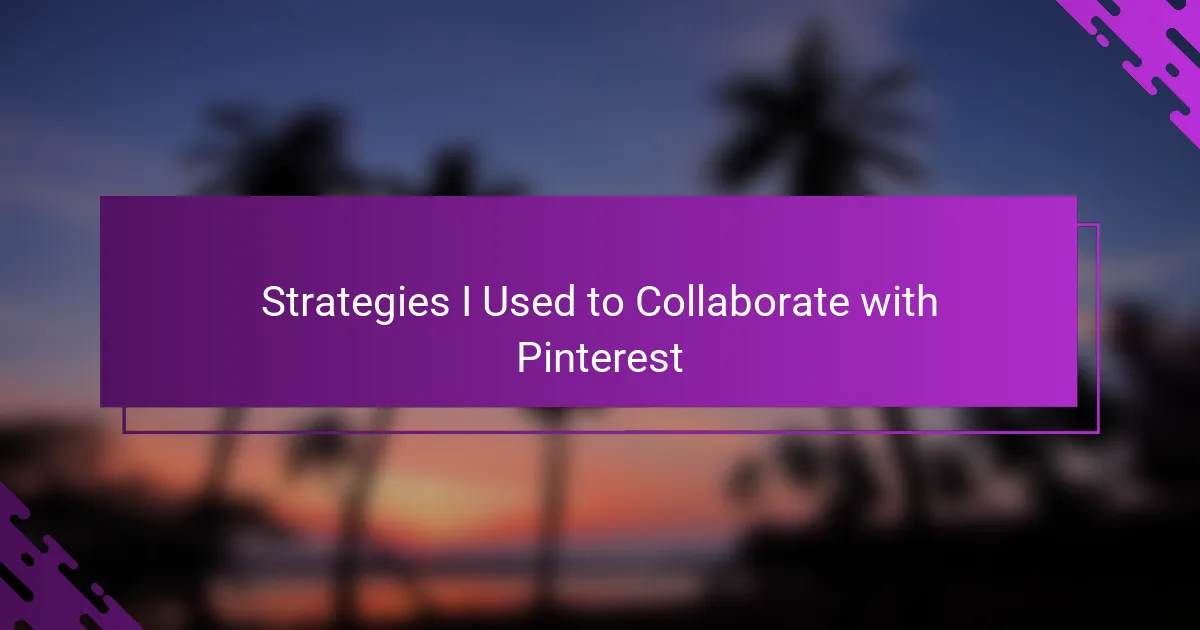
Strategies I Used to Collaborate with Pinterest
One approach that really paid off was joining niche group boards on Pinterest. At first, I hesitated, thinking it might be complicated to coordinate with others, but jumping in opened doors to wider audiences almost immediately. Have you ever underestimated the power of community? Collaborating within these groups not only expanded my reach but also connected me with like-minded bloggers who shared valuable tips and encouragement.
Another strategy involved tailoring my pin descriptions with targeted keywords naturally woven into engaging stories. I used to think stuffing pins with keywords was necessary, but crafting thoughtful descriptions sparked more genuine interest and engagement. It made me realize that Pinterest’s search algorithm values conversations that feel human, not just optimized. Doesn’t it feel better to write for people rather than machines?
Lastly, I dedicated time to regularly analyze which pins performed best and why. Tracking these patterns helped me fine-tune content and posting schedules, so I wasn’t shooting in the dark. When I saw certain pins bringing bursts of traffic, it energized me to double down on those styles and topics. Have you ever felt that mix of excitement and curiosity when data reveals unexpected trends? That’s what kept me eager to collaborate even more deeply with Pinterest.
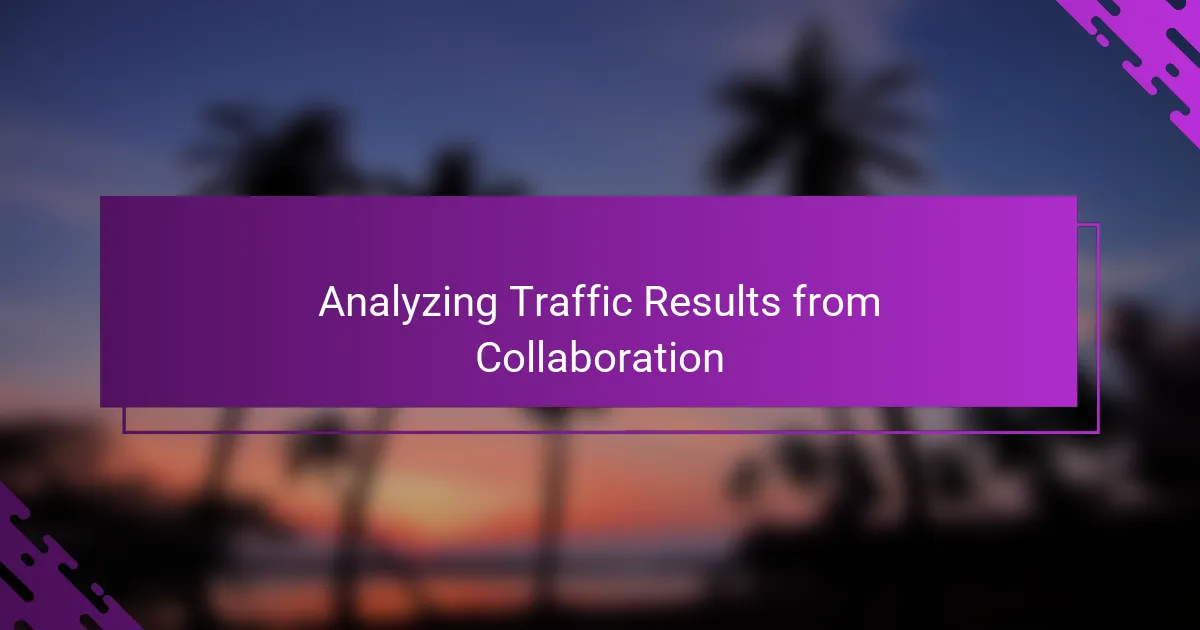
Analyzing Traffic Results from Collaboration
Diving into the traffic data after collaborating with Pinterest was surprisingly eye-opening. I noticed certain pins consistently drove a steady stream of visitors, even weeks after posting. Have you ever felt that thrill when you see real, tangible proof that your efforts aren’t just hope—they’re working?
What really fascinated me was how some pins outperformed others by a wide margin, and it wasn’t always the ones I expected. This made me rethink my assumptions about what my audience truly wanted. Doesn’t it feel empowering to uncover insights that challenge what you thought you knew?
Tracking traffic trends also gave me practical clues for timing and content tweaks. For example, pins shared on certain days or focusing on specific topics sparked notable spikes in visits. Isn’t it rewarding when data turns into a roadmap that guides your next move, making each pin more purposeful than the last?
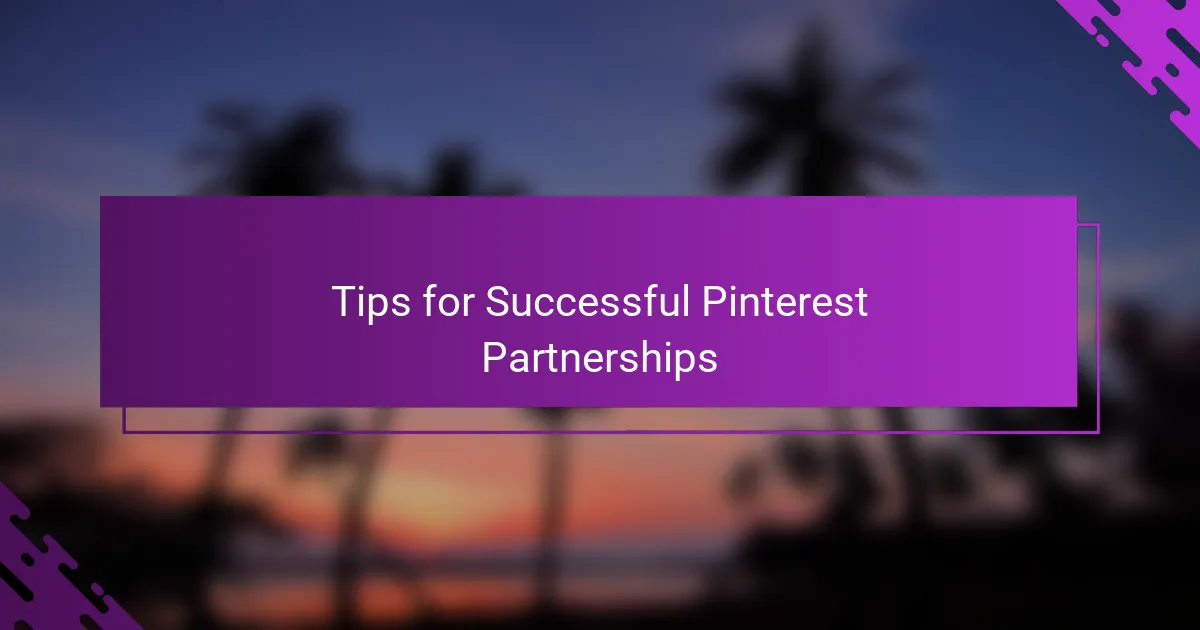
Tips for Successful Pinterest Partnerships
One thing I’ve learned is that communication is key when partnering with Pinterest or other content creators. It’s not enough to just share pins; taking the time to discuss goals and expectations upfront made all the difference for me. Have you ever felt misunderstandings slow down a project? Clearing that up early keeps the collaboration smooth and productive.
Also, consistency really shows results. I made it a point to regularly contribute fresh pins to group boards and Pinterest campaigns, which helped me stay visible and relevant in the community. It felt like building trust—people began to recognize my work and eagerly engaged with it. Doesn’t it seem like steady effort often beats occasional bursts?
Finally, I found it invaluable to stay open to feedback and data from Pinterest’s performance tools. Sometimes, what I thought was a winning pin turned out to miss the mark. Being willing to pivot based on those insights not only improved my content but deepened the partnership. Have you noticed how embracing flexibility can lead to unexpected growth? That mindset truly elevated my Pinterest collaborations.
